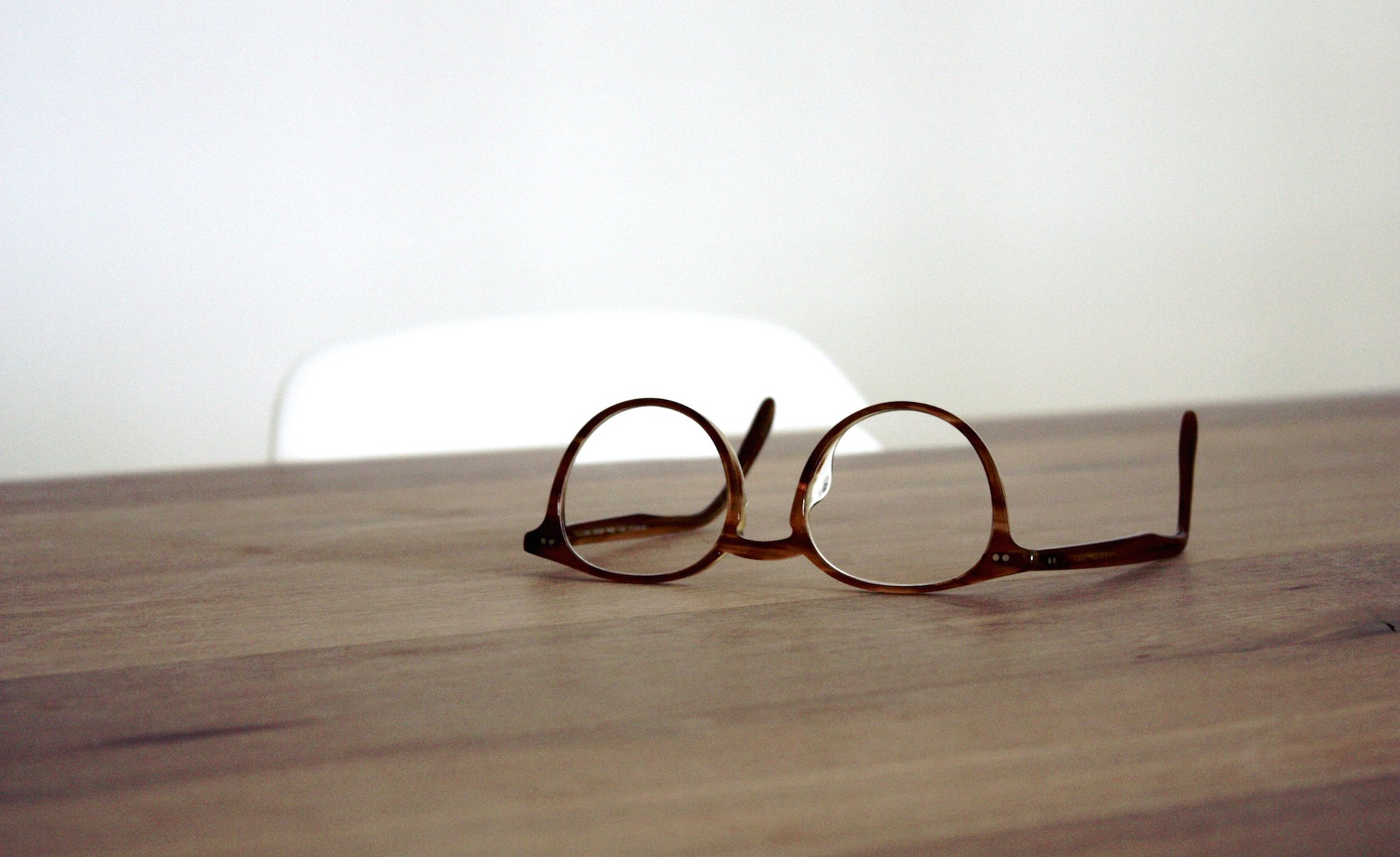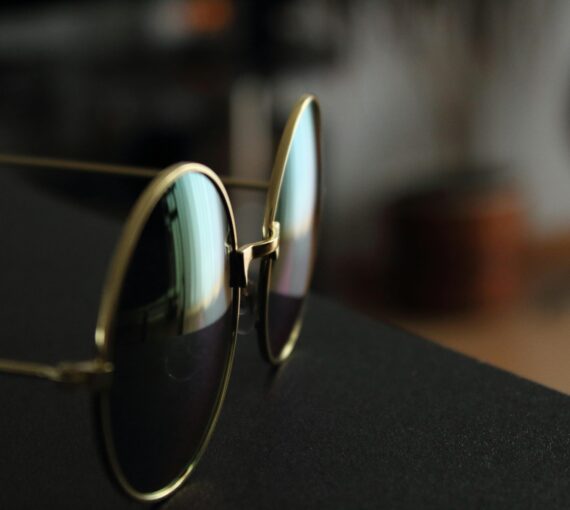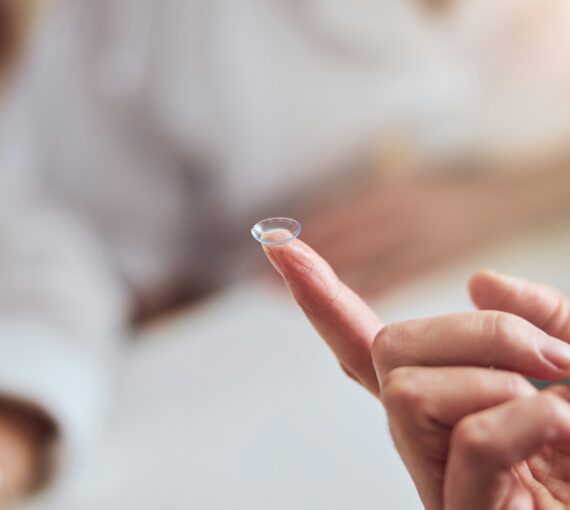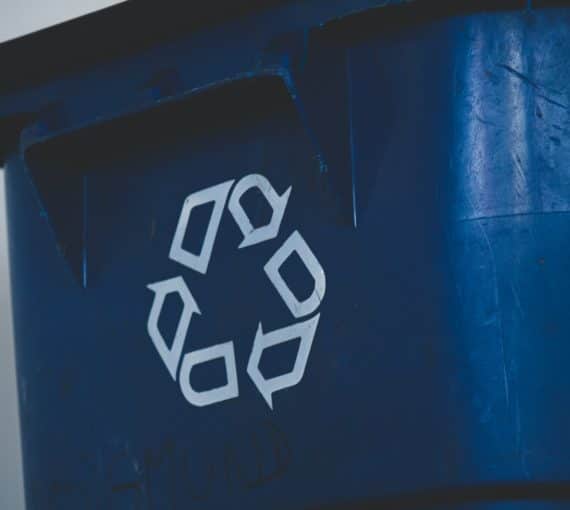
More than four million pairs of eyeglasses are landfilled every year in North America. Curb waste by donating and/or recycling yours!
More than 50 per cent of people in Canada use corrective eyeglasses or contact lenses. Even more wear sunglasses. Help reduce waste and environmental harm. Choose eco-friendly alternatives and, when you’re done with what you have, recycle and/or donate.
Eye care equity
Corrective eyewear is life-changing for people who can’t see well. But there are significant disparities in the availability of vision testing and other eye care services and not everyone can afford to make environmentally friendly eyewear decisions. To ensure all people can access eye care and make sustainable choices, issues of equity and justice must be addressed.
Environmental impact of corrective eyewear
Eyeglasses
Eyeglass frames are typically made of plastics, such as acetate and nylon, or metals like stainless steel, titanium and aluminum.
Acetate, or cellulose acetate, is popular because it’s hypoallergenic and lightweight, but up to 75 per cent is discarded during eyeglass production. And despite being derived from natural plant materials, it’s mixed with synthetic additives like phthalate, a known environmental toxin. According to a 2018 study, more than half of the microplastics found in the Arctic are cellulose acetate. Metal frames often contain heavy metals such as lead and chromium which leach into and contaminate the environment when landfilled.
Disposal of eyeglass frames is a significant environmental challenge. Circular economy advocacy organization Earth911 estimates that more than four million pairs are landfilled every year in North America. Eyeglasses are difficult to recycle due to complex frame materials, so they are landfilled or incinerated, worsening waste and pollution issues.

What about sunglasses?
Though prescription eyeglasses are only worn by those who need them, people wear sunglasses as UV protection and as fashion accessories. They’re often made of plastic materials that end up in the ocean and in landfills, posing risks to wildlife and ecosystems.
Low-waste eyeglass and sunglass suggestions:
- Choose durable and timeless designs. Instead of following fleeting trends, invest in high-quality eyewear built to last, reducing the need for frequent replacements.
- Support ethical and transparent brands. Look for certifications such as B Corp or Certified Sustainable Eyewear.
- Choose brands and retailers that carry lines that use biodegradable (e.g., bamboo, wood, plant-based acetate or bioplastic) or recycled material for their frames.
- Look for vintage or second-hand frames and cases at thrift and consignment stores.
Contact lenses
Contact lenses offer convenience and comfort to those who prefer not to wear glasses, but disposal poses a significant environmental challenge.
Contact lenses are made of various types of soft, water-based plastic. Materials like polymer- or silicone-hydrogel are common as they allow oxygen to flow through to the cornea. These materials are not biodegradable and can take up to 500 years to decompose! According to a MyVision study, 93 per cent of North Americans throw their used contact lenses in the garbage or down the drain. More than 290 million end up in Canadian landfills and waterways every year. Because contact lenses are small and lightweight, they’re easily washed into waterways, threatening marine life and ecosystems.
Low-waste contact lens suggestions:
- Don’t use daily disposable lenses. They’re single-use plastics.
- Sign up for a program that sends you lenses in recyclable or biodegradable packaging.
- Buy from distributors that offer in-house recycling programs.
- Recycle packaging and blister packs appropriately.
- Never flush leftover or expired lenses or lens solution down the toilet.

Tip!
If your contact lens prescription has changed or you’ve had laser eye surgery, donate your unopened boxes of unexpired lenses! Ask your eye care specialist if they’re partnered with any donation programs.
Recycle expired lenses appropriately. Several programs in Canada specialize in hard-to-recycle waste. Do an online search to find a local drop-off point.
Where to recycle and donate used eyeglasses
Unsure if you should recycle or donate? Follow this rule: If your eyeglasses can’t be repaired, recycle. If they’re still wearable, donate.
- Seek local non-profits. OneSight dispenses only new eyewear to patients but takes donated glasses apart and sends them to a third party recycler.
- Check out the Canadian Lions Eyeglass Recycling Centre. Lions Clubs International also collects eyeglasses (and hearing aids) and sends them to be reused or recycled.
- Ask your eye care specialist. Many know how to recycle used specs. If they don’t, explain that you care about what happens to stuff you’re no longer using!
- Check local municipal recycling guidelines. Some will accept eyeglasses at special collection points.
Don’t forget: Most programs take adult and children’s glasses.

Tip!
Before donating, note the lens prescription. Organizations that provide eyewear to people in need will match a donation to a recipient with the same prescription.
What’s the eco-friendliest, laser eye surgery, contact lenses or eyeglasses?
While glasses and contact lenses provide temporary solutions to vision problems, laser eye surgery offers a more permanent fix to those that qualify and can afford it. But is it an eco-friendlier solution?
Yes! Laser eye surgery eliminates the need for ongoing purchases of contact lenses, eyeglasses, cases and other products. It reduces waste, minimizes demand for resources and lowers manufacturing emissions.



